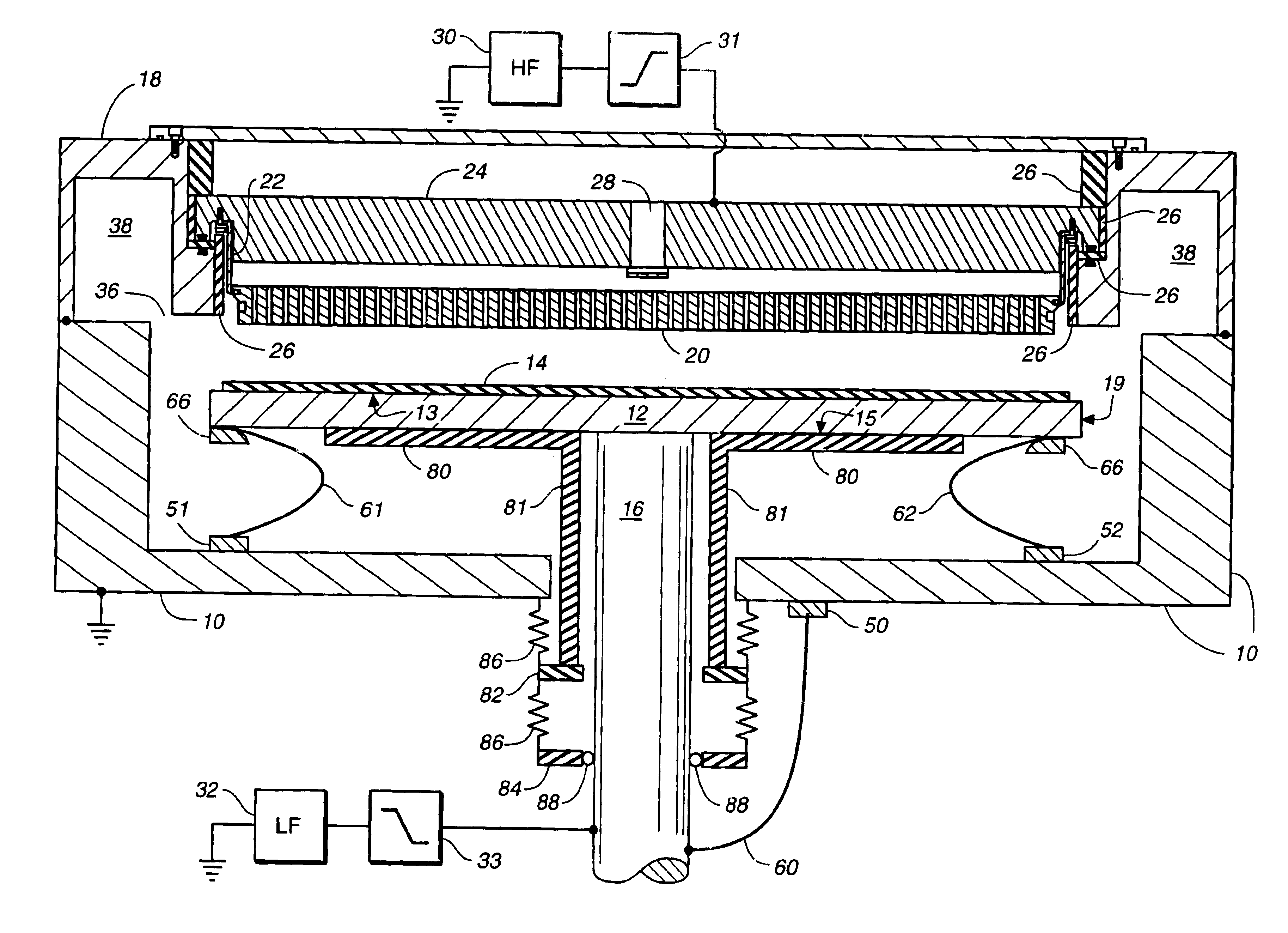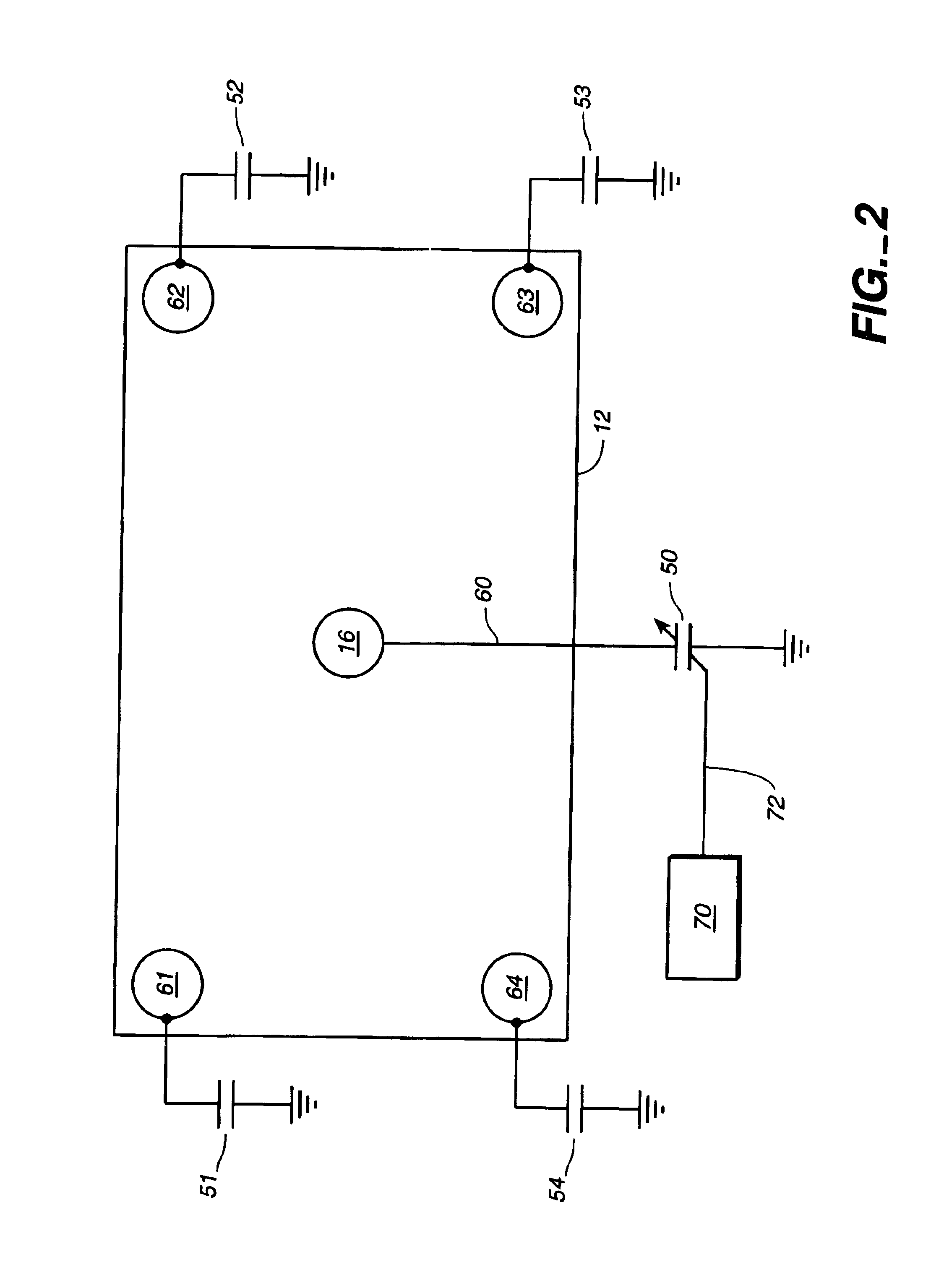Multiple frequency plasma chamber with grounding capacitor at cathode
a multi-frequency, capacitor-based technology, applied in the field of plasma chambers, can solve the problems of increasing the risk of forming a secondary plasma body, and achieve the effects of reducing or eliminating coupling, high density, and improving the performance of the plasma process
- Summary
- Abstract
- Description
- Claims
- Application Information
AI Technical Summary
Benefits of technology
Problems solved by technology
Method used
Image
Examples
Embodiment Construction
Plasma Chamber
FIG. 1 shows a plasma chamber that includes capacitors connected between the cathode electrode and ground according to the present invention. The conventional features of the chamber will be described before describing the details of our invention.
The invention is useful in plasma chambers for fabricating or treating any kind of electronic substrate or workpiece, such as a silicon wafer or a glass substrate for a flat panel display. The illustrated chamber is designed for performing plasma-enhanced chemical vapor deposition (CVD) of films onto glass substrates. However, the invention also is useful in chambers for performing other plasma-assisted processes such as plasma etching.
The plasma chamber or vacuum chamber has a housing or wall 10 that encloses the side and bottom of the chamber interior and is electrically grounded. A metal pedestal or susceptor 12 functions as a cathode electrode and has a front surface 13 that supports a workpiece or substrate 14. We refer ...
PUM
| Property | Measurement | Unit |
|---|---|---|
| thick | aaaaa | aaaaa |
| frequencies | aaaaa | aaaaa |
| frequencies | aaaaa | aaaaa |
Abstract
Description
Claims
Application Information
 Login to View More
Login to View More - R&D
- Intellectual Property
- Life Sciences
- Materials
- Tech Scout
- Unparalleled Data Quality
- Higher Quality Content
- 60% Fewer Hallucinations
Browse by: Latest US Patents, China's latest patents, Technical Efficacy Thesaurus, Application Domain, Technology Topic, Popular Technical Reports.
© 2025 PatSnap. All rights reserved.Legal|Privacy policy|Modern Slavery Act Transparency Statement|Sitemap|About US| Contact US: help@patsnap.com



